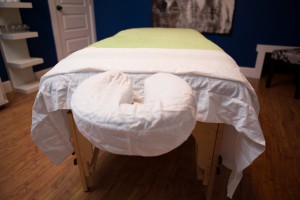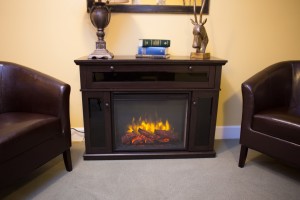Modalities & Treatments
Deep Tissue Massage
Will relieve severe tension in the muscle and the connective tissue or fascia. Focus is given to the muscles located below the surface of the top muscles. This treatment is used to help resolve particular musculoskeletal disorders and implements a dedicated set of techniques to achieve a considerable measure of relief.
Myofascial Release
Fascia is often related to a ”tight plastic film” that holds together the muscles, arteries, bones, organs, etc. Myofascial Release is a technique that works by manipulating the fascia that connects and surrounds muscles. As fascia is body-wide, any tension or trauma to one part of the body can easily affect other parts of the body. Under a trained touch, the fascia will respond in order to release the adverse effects of inflammation, tensions, and trauma.
Trigger Point Therapy
A trigger point is a tight area within muscle tissue that causes pain in several parts of the body. The pain can be sharp and intense or perhaps a dull aches. Therapy is specifically designed to alleviate the source of the pain through cycles of isolated pressure and release. The client may be asked to help with identifying the exact location and intensity of the discomfort. The results and the benefits of this technique help to alleviate constricted areas in the muscles and this in turn helps to relieve the pain. An individual can experience a significant decrease in pain after just one treatment. Regular therapy can help with the management of chronic pain and stress, and may even prevent potential chronic injury to a specific area.
Neuromuscular Therapy
This approach is used to bring balance between the nervous system and the musculoskeletal system. It is a process by which recovery can be made from acute and chronic pain. Overall this therapy utilizes specific massage techniques, including pressure to trigger points, and enhances the function of joints, muscles and movement. It releases endorphins which is the body’s own natural pain killer.
Sports Massage
This form of massage is typically used before, during, and after athletic events. Depending on the needs of the athlete, a variety of techniques are used including Swedish, cross-fiber friction, pressure point work, and joint mobilization. Athletes are helped to prepare for peak performance, by draining away fatigue, relieving swelling, reducing muscle tension, and promoting flexibility, and ultimately preventing injury.
Hot-Stone Therapy
This technique was formally developed to be used in a spa environment. Stones are heated in a hot water oven. The stones are then positioned on the body and during the course of the therapy session, may be moved about with light pressure being exerted on the warm stones.
Prenatal
Pregnancy places strong demands on a woman’s body and is a time when some nurturing and pampering is a must! Massage not only relieves the tensions and aches caused by the extra weight and shift in the center of gravity, massage can also reduce swelling , soothes the nervous system, acts as a tonic and reduces fatigue, and enhances energy. Massage for a pregnant woman may also offer an increased likeliness of a deeper sleep pattern.
Swedish Massage
This therapy is now known as “traditional” massage, and was first developed through the study of gymnastics and physiology back in the 1800’s. It is comprised of many intense techniques such as long gliding strokes, kneading, friction, tapping and shaking motions. Like other therapeutic modalities this massage is effective for many ailments, and also promotes better circulation, affecting the nerves, muscles, and glands.
Aromatherapy
With this massage, essential oils for curative and rejuvenating effects. Aromatherapy dates back to ancient Egypt, India and the Far East, that has been used for hundreds of years to reduce stress and tension. It also refreshes and invigorates the body, while soothing emotions and working toward mental clarity. In review with clients, a determination is made as to the specific oils that will be used to affect physiology change, and that will affect the limbic area of the brain that is related to emotions and memories.








